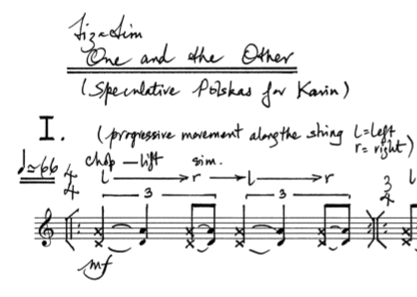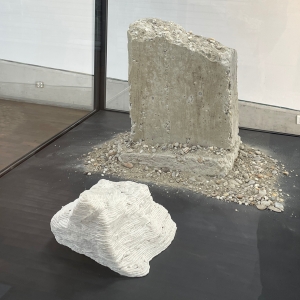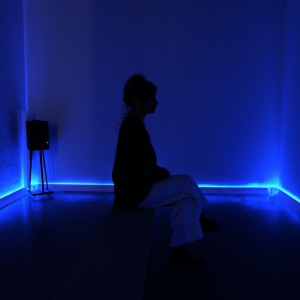
At the Knot of Presence: Weaving with the embodied knowledge of my artistic palette in Liza Lim's One and the Other (Speculative Polskas for Karin)
This artistic research exposition unfolds the shared work between Australian composer Liza Lim and Swedish violinist Karin Hellqvist, from the viewpoint of Hellqvist as performer and co-creator. Together, the artists have created the violin solo work One and the Other (Speculative Polskas for Karin) (2021–22). The Swedish folk music tradition that Hellqvist has carried with her since her childhood, and especially the polska dance, serves as their point of departure. This tradition resides in Hellqvist’s body and performance practice as embodied knowledge – a term introduced by Maurice Merleau-Ponty (1962), and it becomes their main path of research. A central concept in the reflections is the ‘artistic palette’ – a concept created by Hellqvist to conceptualise the skills and abilities used in creative work. Hellqvist’s embodied knowledge connected to the tradition is woven into the work through explorations of elements as the specific pulse of the polska and its ornamentation. Furthermore, those embodied skills are explored as decoupled in the third movement, capturing indeterminate aspects. The main question addressed is how the embodied knowledge of Hellqvist’s artistic palette serves as resource and inspiration in the shared process and how it affects the ontology of One and the Other (Speculative Polskas for Karin).
Topics of distributed creativity, shared work as mycelial structure, instrument-building, ownership, and temporal ecology are being unpacked in the light of the artistic palette. The artistic research exposition unfolds a compositional process whereby the performer is participating actively, thus problematising the view of where creativity may be located in compositional work. It comprises written reflections, audio examples, pictures, and video material from the creative process as well as a video of the whole work. The research context comprises historical and aesthetic perspectives, as well as recent research on performer creativity and embodiment.



